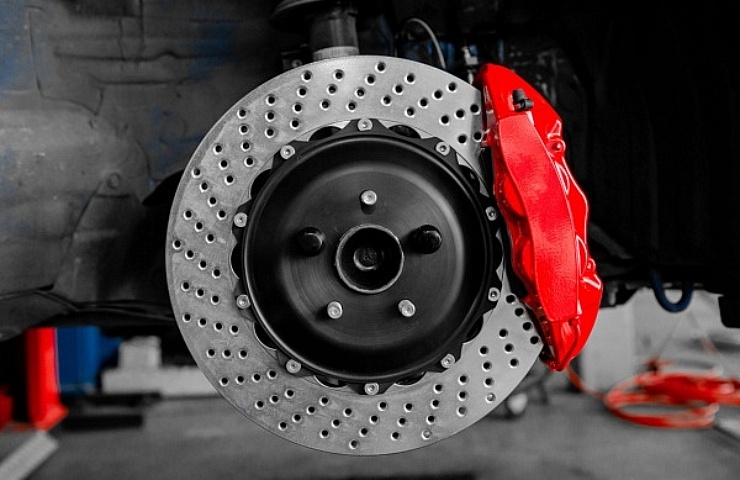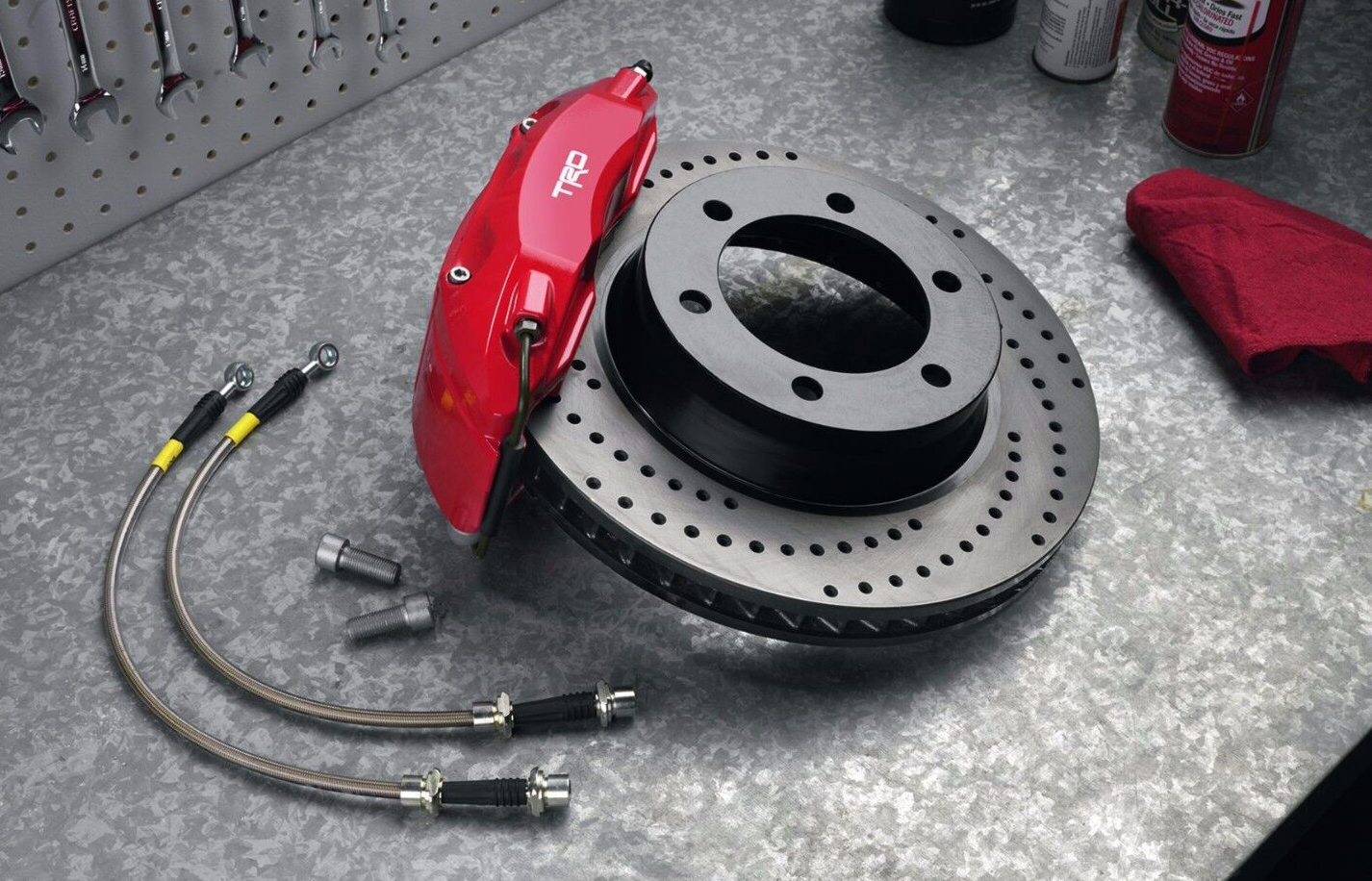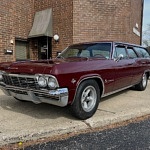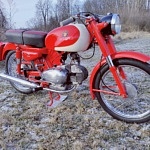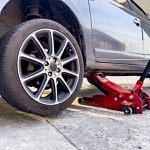Contents
Brake Caliper History and Design
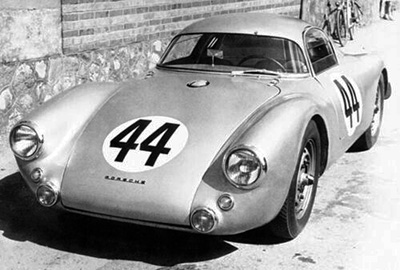
1953 Porsche 550 Spyder at 24 Hours of Le Mans
The use of a caliper to slow a brake rotor has been around since the 1900s. However, it gained wide interest in the early 1950s when a Jaguar fitted with long-lasting disc brakes won the 24 Hours of Le Mans in 1953. Sports cars increased demand for disc brakes, and by the 1970s, most cars had disc brakes with calipers (at least, in the front).
The brake disc (or rotor) is attached to the vehicle’s axle. The caliper hovers over the rotor and houses the brake pads and at least one piston. The piston resides within a cylinder and is activated by hydraulic brake pressure. When the brake pedal is engaged, the increased hydraulic pressure causes the piston to move and push the brake pad against the rotor, slowing the vehicle.
Three Types of Brake Calipers
- Floating: A floating caliper moves with the disc. The brake pistons are only on one side of the caliper. With this design, debris can catch in the mounting brackets, causing the brake pads to engage the disc at an angle rather than directly. Floating calipers typically are lighter weight with fewer pistons. This makes them easier and cheaper to manufacture.
- Fixed: A fixed caliper does not move in relation to the brake disc. Therefore it is less tolerant of alignment issues. There are brake pistons on both sides of the caliper. Usually, a fixed brake caliper with multiple pistons offers the most consistent braking performance but it’s often heavier and more expensive.
An uncommon brake caliper setup is a swinging (or sliding) design that uses pivoting bolts to mount the unit. When engaged, a swinging caliper rotates inward, requiring a unique wedge-shaped brake pad.
How Are Calipers Sold?
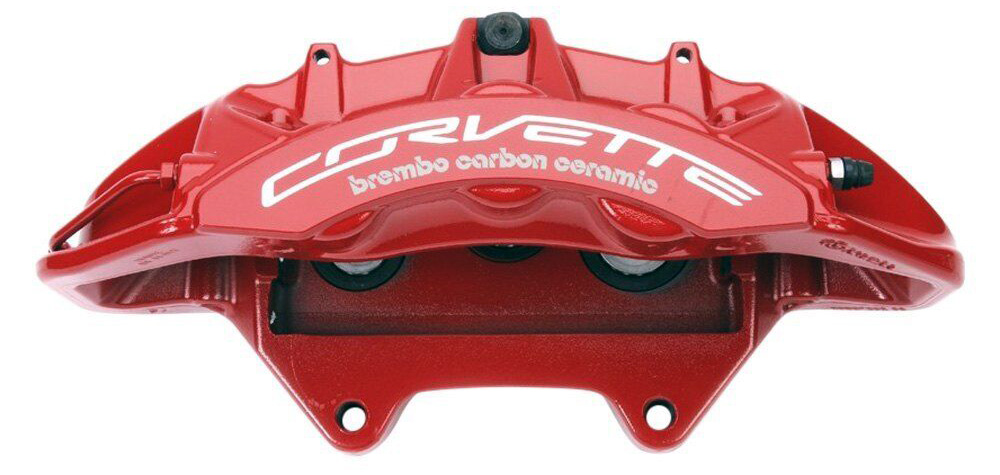
This Chevy Corvette brake caliper is sold on eBay as semi-loaded.
- Loaded calipers come with brake pads already assembled and installed.
- Semi-loaded calipers are sold with the mounting bracket and hardware—including the shims and bolts—but without any pads.
- Unloaded calipers are sold without any mounting hardware or brake pads.
Installing all the clips and hardware on a caliper can be a pain. For ease of installation, loaded calipers are the winner.
Shop now for brake calipersHow Many Pistons Are In a Brake Caliper?
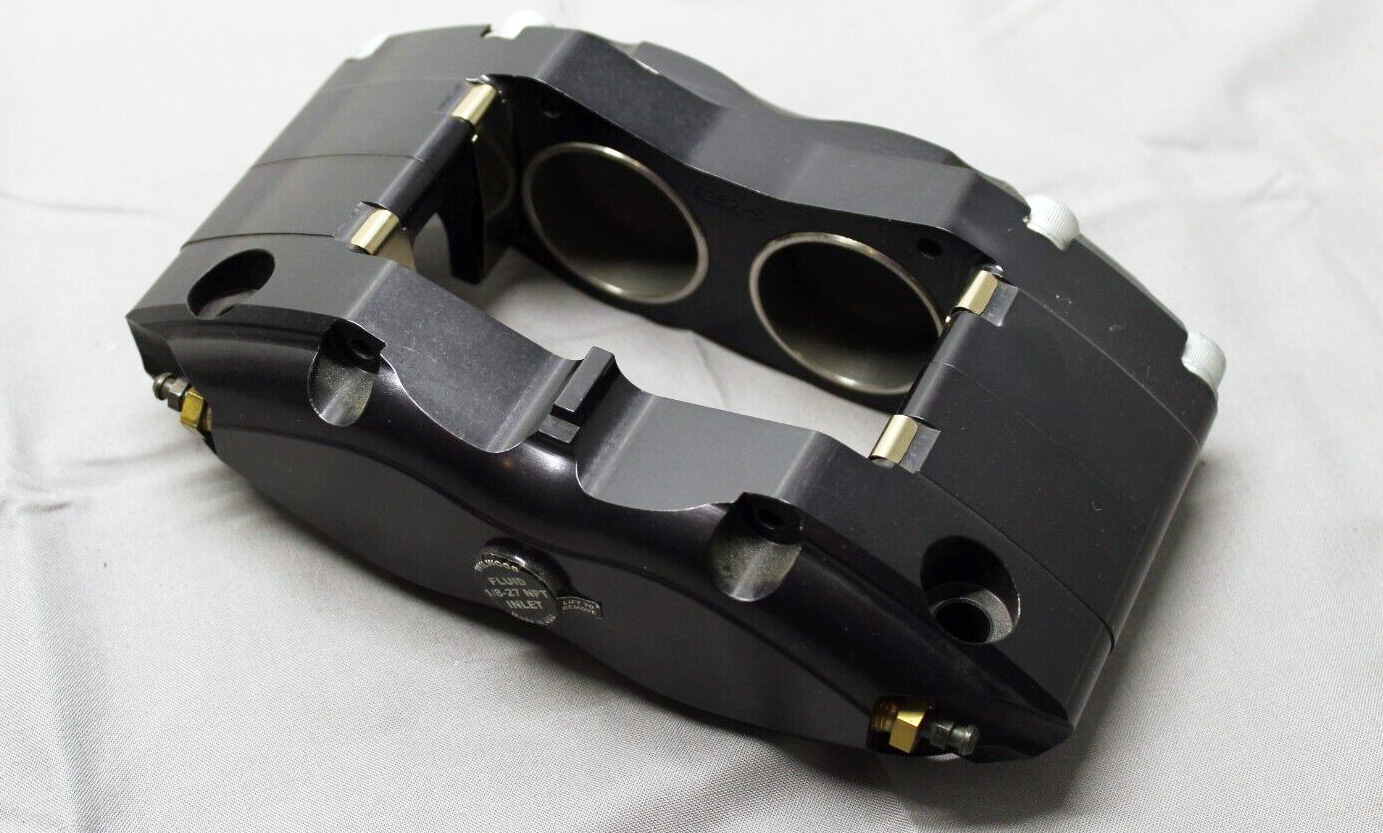
Wilwood Synapro aluminum 4-piston brake caliper
The brake piston (also called pot) lets the brake pads contact the brake rotor to slow and stop a vehicle.
- Single piston: As the name implies, a single-piston caliper has one piston, usually installed on a sliding caliper design.
- Dual piston: The two-piston design is usually found on a sliding caliper. The concept uses two pistons to apply even pressure across the entire pad surface.
- Four-piston: A four-piston caliper has two pistons on the inboard side of the caliper and two on the outboard side. This causes even more pressure to be applied to the brake disc. They are usually part of a fixed caliper design.
- Six-piston: There are three pistons on each side of the caliper, allowing for even more force.
Some performance vehicles use as many as 12 pistons in their brakes—keeping an equal number of pistons on each side. It can be fun to boast about having brakes with more pistons, but unless you regularly drive a road course in a high-performance car, a four-piston brake caliper is sufficient for most uses.
Iron vs. Aluminum Calipers
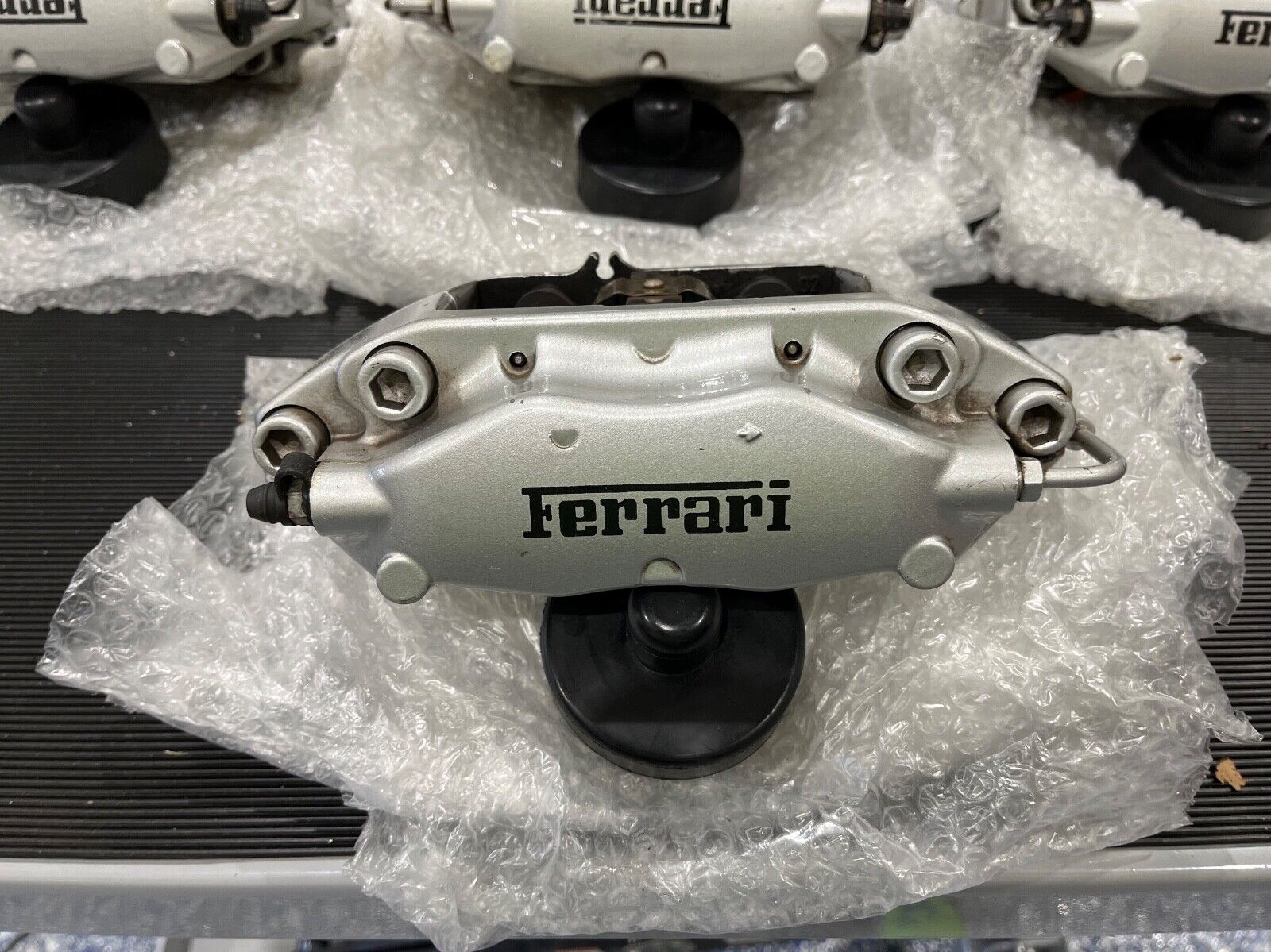
Ferrari aluminum brake calipers
Most brake calipers are made from iron. Performance vehicles might have an aluminum caliper to reduce the car’s unsprung weight, improving handling and acceleration. An aluminum caliper is softer, so care must be taken to avoid over-tightening bolts and increasing aluminum wear. Aluminum also dissipates heat faster than its iron counterparts and has fewer corrosion issues.
Shop now for aluminum brake calipers
